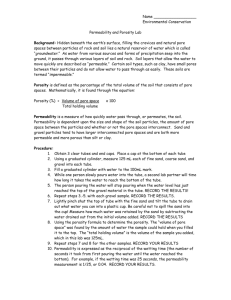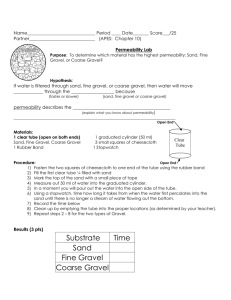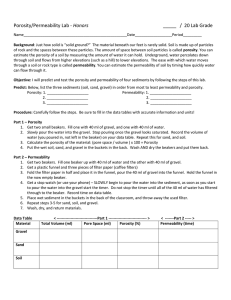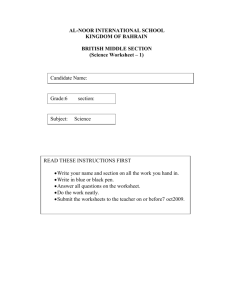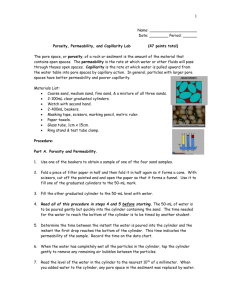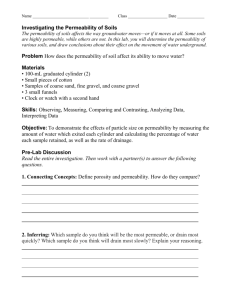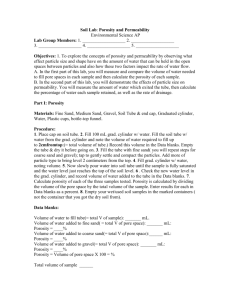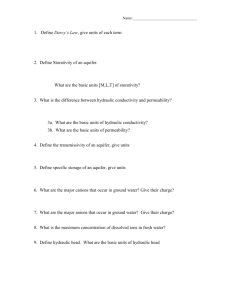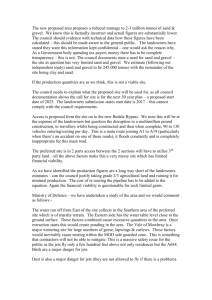Additional materials
advertisement
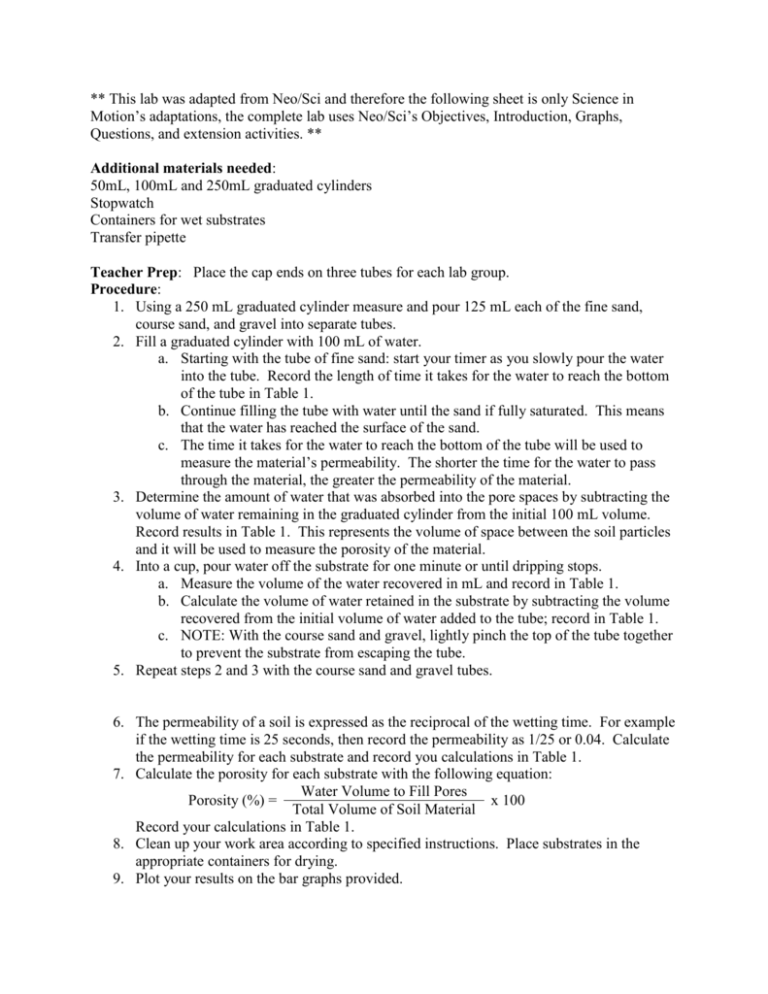
** This lab was adapted from Neo/Sci and therefore the following sheet is only Science in Motion’s adaptations, the complete lab uses Neo/Sci’s Objectives, Introduction, Graphs, Questions, and extension activities. ** Additional materials needed: 50mL, 100mL and 250mL graduated cylinders Stopwatch Containers for wet substrates Transfer pipette Teacher Prep: Place the cap ends on three tubes for each lab group. Procedure: 1. Using a 250 mL graduated cylinder measure and pour 125 mL each of the fine sand, course sand, and gravel into separate tubes. 2. Fill a graduated cylinder with 100 mL of water. a. Starting with the tube of fine sand: start your timer as you slowly pour the water into the tube. Record the length of time it takes for the water to reach the bottom of the tube in Table 1. b. Continue filling the tube with water until the sand if fully saturated. This means that the water has reached the surface of the sand. c. The time it takes for the water to reach the bottom of the tube will be used to measure the material’s permeability. The shorter the time for the water to pass through the material, the greater the permeability of the material. 3. Determine the amount of water that was absorbed into the pore spaces by subtracting the volume of water remaining in the graduated cylinder from the initial 100 mL volume. Record results in Table 1. This represents the volume of space between the soil particles and it will be used to measure the porosity of the material. 4. Into a cup, pour water off the substrate for one minute or until dripping stops. a. Measure the volume of the water recovered in mL and record in Table 1. b. Calculate the volume of water retained in the substrate by subtracting the volume recovered from the initial volume of water added to the tube; record in Table 1. c. NOTE: With the course sand and gravel, lightly pinch the top of the tube together to prevent the substrate from escaping the tube. 5. Repeat steps 2 and 3 with the course sand and gravel tubes. 6. The permeability of a soil is expressed as the reciprocal of the wetting time. For example if the wetting time is 25 seconds, then record the permeability as 1/25 or 0.04. Calculate the permeability for each substrate and record you calculations in Table 1. 7. Calculate the porosity for each substrate with the following equation: Water Volume to Fill Pores Porosity (%) = x 100 Total Volume of Soil Material Record your calculations in Table 1. 8. Clean up your work area according to specified instructions. Place substrates in the appropriate containers for drying. 9. Plot your results on the bar graphs provided. DATA SHEET Table 1 Total Volume of Soil Material (mL) Wetting Front Travel Time (sec) Water Volume Required to Fill Pores (mL) Water Volume Recovered (mL) Water Volume Retained (mL) Permeability (reciprocal of travel time) Porosity (%/space) Fine Sand (small particles) Course Sand (medium particles) Gravel (large particles)
